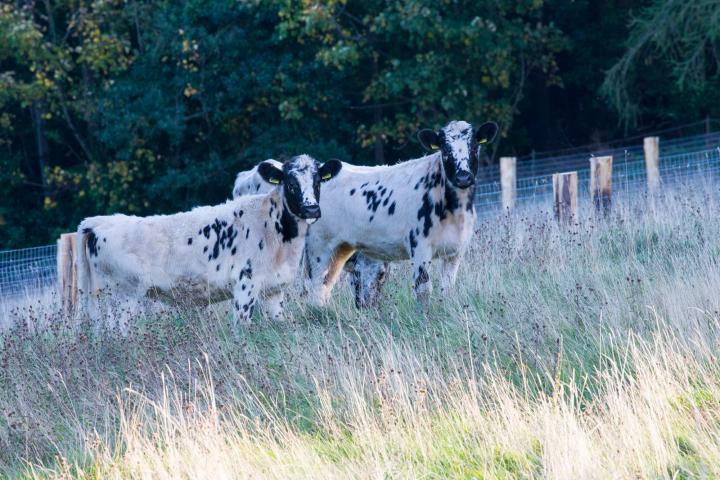This project was commissioned by DLR's Biodiversity Officer with the help of the Padraig Fuller the secretary of the Droimeann society along with our Parks Staff, to manage the old meadows at Fernhill. Fernhill was in private ownership until it was purchased by Dun Laoghaire Rathdown County Council and it is currently been developed as a sustainable public park.
The meadows in Fernhill have been grazed by a small number of cattle and are chemical free for almost a century and this is reflected in the wonderful diversity of plants and flowers in the meadow. Now that Fernhill is a public park, the aim is to keep the meadows grazed by a small number of cattle during winter and chemical free, to help keep these meadows full of wonderful plants and to enhance Biodiversity including for our pollinators. Also, in the face of climate change these meadows have demonstrated great resilience, for example during the drought the meadows survived and flourished while everywhere around them become scorched and desolate.
Conserving meadows that are on the decline
These types of meadows (semi-natural grasslands) are declining in Ireland and especially in the Dublin region. There has been a shift towards more intensive grazing systems. The use of more productive grass varieties or alternative fodder crops, the greater use of fertilisers and a shift from hay to more frequent cuts for silage also have had negative environmental consequences. This has led to a massive loss of traditional meadows and their associated plants and wildlife.
Cattle grazing to assist species diversity
Grazing by livestock such as Droimeann plays a key role in maintaining species-rich habitats by controlling more aggressive species which would otherwise dominate these areas and by preventing scrub encroachment. The selection of certain plant species in preference to others by cattle is an important factor determining the structure and floristic composition of the vegetation of the meadows. Cattle grazing removes plant material more gradually than cutting and gives mobile species such as insects, birds, reptiles, amphibians and small mammals, a better chance to move to other areas within the meadow.
Cattle like the Droimeann use their tongues to pull tufts of vegetation into the mouth. This means that they do not graze vegetation too close to the ground and often leave tussocks of grass which are used by insects and small mammals. Because of their wide mouths cattle do not graze selectively and as a result do not target flower heads and herbage which is important for botanically diverse habitats. Cattle are able to create their own access into rough areas and the trampling of these areas can be an important way of controlling scrub. The Droimeann are suited to the harsher local micro- climate of fernhill during cold spells, the rocky hard ground and unpredictable ground conditions, where groundwater is close to surface in places. They are also docile creatures and are now accustomed to the attention of park visitors who are very curious to see cows in an urban park especially the children.
Please do not enter the meadows as they are a sensitive ecological feature and are not for amenity purposes but provide a rare landscape feature no longer seen in many places in the county or indeed across Ireland. The meadows will be monitored for their flora and fauna during the summer months. The winter grazing will be adjusted if needed to obtain the greatest diversity. However, so far so good, happy cows and happy meadows.
For more information on the Droimeann cattle society click here




